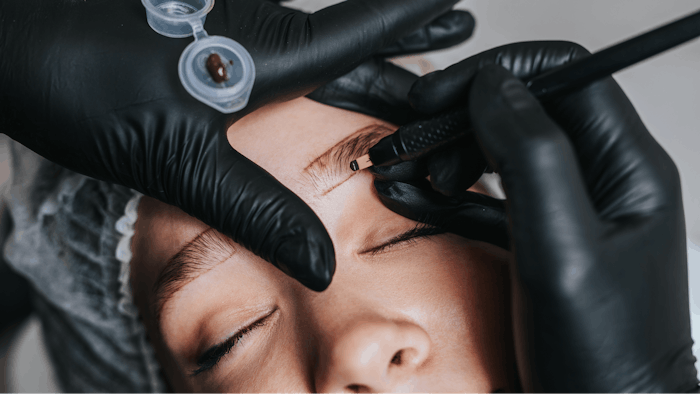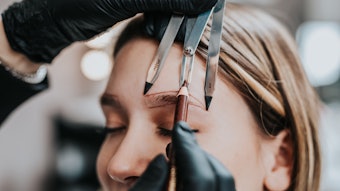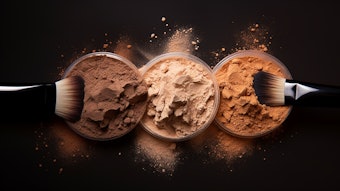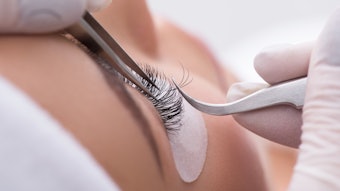
When a trend emerges, it can be tempting to jump on the bandwagon in order to capitalize on monetizing service revenue. In this fast paced modern world we live in, it can be tempting to rush the learning process in order to not miss on a perceived opportunity.
It is important to understand the importance of taking adequate time to learn any new modality. When considering your source for training and development, it is critical to invest in training that is dedicated to detailing not only the techniques and benefits of each service, but also teaching a practitioner how to avoid mistakes, and when a mistake does inevitably happen, how one can coarse correct.
On the topic of microblading, I have enlisted renowned practitioner and master trainer, Victoria Vela, Brow Beauty by Victoria, to describe a lesser known side of the microblading specialty.
Q: When you are working with your own clients, do you see the pigments shifting over time?
A: Sometimes, there are many factors that play into how pigment ages in the skin. Over the years, I've noticed things we don't think about as artists can impact pigment retention and color. For example, certain hormone medications can cause the client to metabolize molecules in the pigment causing a shift in the color.
Overall, what I've found to be most important is pigment knowledge and color theory education. Depending on the pigment line you select, you will likely need to understand how to correct the pigment for the annual touch up. Inorganic pigments tend to carry more iron in them. This causes a reddish tint over time as the body metabolizes most ingredients in the pigment and leaves the iron molecules in the skin. When this oxidizes it will create the red hue.
When using organic lines, there are heavier carbon loads in them. This will cause that ashy or bluish appearance over time. This is why I say color theory is so important. What I learned early in my career is to plan ahead and drops of a neutralizing color along with the pigment I've selected. When I use any pigments that are medium to the darkest brown, I will often add a drop or two of an orange corrector pigment. If I am using a blonde pigment, I will leave a pigment mask of the olive corrector to counteract any red tones from coming through months down the road.
Related: Mastering Microblading
Q: How do you coarse correct?
A: When a client comes in for the six week touch up or annual touch up, correction pigments can be used. If you can imagine the color wheel, the way to correct it is to cover the previous pigment with the opposite color. If there is a reddish tone to them, I will go over the pigment (either with microblading or shading) with the olive corrector pigment.
If a client comes in and I notice the pigment has healed ashy or has a blue tone, I will use the pumpkin corrector. I will typically perform the first pass with the corrector pigment and then complete the session with the target color. It usually takes two to three passes to complete a microblading and/or shading session.
Q: What are the common misconceptions professionals come into your training with?
A: I've had so many students who have taken my class because they believe they will be making six figures as soon as they launch their permanent makeup business. I can't stress enough how much work it takes to build your skill and your brand.
It's not an easy career path by any means and the industry is always changing. There is new innovation every year! I am always completely transparent with my trainees from the start. You will need to practice every spare minute you have to develop your craft
Q: What sets your training apart?
A: In the permanent makeup courses I provide, I believe it’s important to set my students up for success. I spend an entire day covering everything they should know before they start their business, best practices, and the exact steps I took to build my business and grow my clientele.
Q: Do you have customers come in with a build up from old cosmetic tattoo services received and what do you do to correct that?
A: I do have clients who come in with previous work from other artists. If they have work that is too saturated to work over, I recommend a local laser removal medspa. It’s important to note, skin is like a sponge and can only hold so much pigment. If their work is faded enough, I will take them as a new client. If they have faded work that needs to be corrected (such a red tones or grey/ashy tones), I will color correct in the first session and have them come back for touch-up appointment where we will go in with the target pigment.
In these situations, they may need an additional touch up depending on how they heal. Every client heals differently so I will have them send me photos six weeks after their appointment to assess.
Related: Top 20 Cities in Love With Microblading
Q: Are there limits to corrections?
A: Yes; when the work is too saturated to work over and more pigment is added, the results will look like a blurry mess. The original pigment will come through and the session will not make a difference. It’s important to understand when to send the client for removal. When adding pigment on top of previously pigmented brows, it almost guarantees that you will make the inevitable removal process much longer for the client.
Q: What are the common mistakes professionals make when performing cosmetic tattoo services?
A: The most common mistake I have noticed is when it comes to mapping the brow. You always want to ensure that you are incorporating as much of the natural growth as possible while still following basic mapping techniques. Failure to do this will lead to a lot of maintenance for your clients. Most clients are coming to us for permanent makeup to make their everyday routine quicker and more seamless.
I’ve also noticed, when clients are coming to me from another artist, the microblading or powder brows was done much too deep. When starting out in this industry, best practice to work with is using a light pressure until you understand proper depth. The three point stretch is crucial, so that you’re able to create crisp implantation with the best healed results.
As is common with any new treatment a professional is looking to adding to their service offerings, it is important to not only consider the potential profitability, one also needs to take consideration of the learning curves involved. Curating a variety of types of mentors and teachers that can guide your growth according to having been through the beginning stages of multiple aspects of your business.
Doing this can facilitate learning in a way that ideally allows mistakes to be avoided and when mistakes are unavoidable, learning ways to improve on an individual’s own ability to swiftly adapt and coarse correct. Master technicians are able to improve on a clients service results when they come from previous work that is less than ideal. Ongoing training is the key to success.










